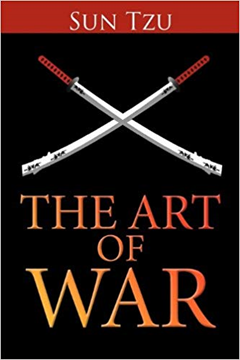
Course table of contents
1. Role of product manager and framework
2. Market segmentation and competitive analysis <- You are here
3. User personas
4. Hypothesis testing
5. Product positioning
6. Product roadmap
7. Writing requirements for development
8. Business model and Business plan
9. Financial plan and pricing
- To be continued
As I said in the first post, product management lies at the intersection of technical and marketing knowledge. In this post, we begin to form an understanding of who we are making a product for and who our competitors are. After that we will analyze who will use our product, how to manage the development of the product and talk about development from a technical point of view, but for now, let's focus on the market segments.
Market segmentation
It will not be possible to conquer the entire market, at least immediately. Therefore, when working out a strategy for the development of your product, you need to choose a target segment in order to focus on the audience to whom your developments may be most interesting.
But that's not all. Once you have chosen a segment, you need to consider it again as a whole market and again divide it into parts. During the product launch phase, the most important task of a product manager is to determine the narrowest niche you can start with. In the future, nothing will prevent it from expanding and entering new segments, but first, the product must become an integral part of at least some niche. For this, various segmentation methods are used:
- Demographic, when a group of people of a certain age and social status is determined
- Psychographic, where you target the specific needs of your prospect
- Geographic when you tailor a product for specific regions
For B2B products, you can also consider:
- The size of the organization, creating solutions specifically for corporations or small businesses
- Industry or industry your product is targeting
Below is an example of a possible segmentation for a software product:

To successfully position the product, you need to find the intersection between the segments. For example, your market niche may look like this:
The product is aimed at people with higher education, those who work in a large organization from the financial sector, live in Russia and love everything of quality.
How the segments are joined can be seen in this animation:
When it comes to a product, you need to assess the size of the market. And here the following terms apply:
- TAM (Total Available Market) - for retail goods and services, this is conventionally all 6 billion inhabitants of the earth
- SAM (Served Available Market) is that part of the market that you, in principle, can reach and offer your product
- TM (Target Market) target market - the coverage you want to achieve in practice
- SOM (Serviceable Obtainable Market) are those customers for whom you are already doing something, and for whom it is easiest to offer something new

Selecting a segment
How does it look in practice? Let's imagine we are making an application for ordering a taxi. First, we want to focus on one city. But further narrowing of the niche can go in different ways. Let in our case it will be a taxi for organizations, since organizations are more solvent clients. The market size is smaller but remains attractive. Then you can go to the economy segment or, conversely, choose premium. If the market size is still attractive to you, then this is good segmentation. The narrower the segment, the easier it is to understand what features the application will need, what problems customers have, and what service is expected of you.

When doing segmentation, be sure to analyze its capacity. In the beginning, this can be done in crude ways, using an Internet search and contacting statistics authorities. After identifying a potential niche, you need to test its availability using marketing tools. Then you will see the reaction of the target audience of this niche to your offer. It's best if you can find potential customers and ask them questions.
No one can guarantee that the segment is chosen perfectly correctly, so always remain flexible when developing a product, leave a chance for a turn in the other direction. That is, if the taxi business does not work, you can use the same vehicle fleet to deliver food ... or flowers.
The signs of a well-chosen segment are as follows
- Your solution fully satisfies customer needs
- Working in this segment allows you to subsequently enter a larger market (Target Market)
- You know how to reach 10-25% of this segment within a year
If you are not sure that you will have time to conquer the necessary part of the market, then you have not narrowed the segment enough. For example, it is possible to develop a taxi not in Moscow, but only in the area of the Chertanovskaya metro station, and so on. This is clearly shown in another interesting video about segments:
Real business examples
Since we started talking about taxis, the example of Uber is perfect. When this service first appeared, it worked exclusively on premium cars. They had a BMW7, the driver came in a tie and white shirt. The UberBlack service allowed us to test the model and gain a foothold in the market. Only then did the company begin to develop UberX - travel for the middle class.

When the name Uber became almost a household name, additional services appeared, such as Uber Start, Uber Luxury, Uber Kids, Uber Ferry.
In the end, the company has an application where all types of vehicles and transportation are available. But the main thing is that they started with the right segment, and the product managers had a strategy. They understood in which direction the company would grow.
 The success of the most popular social networks today also began in rather narrow segments. Two companies that are similar in structure are Facebook and Vkontakte. The first of them is the largest international social network, and the second is the largest in the countries of the former USSR. But both portals were initially available only by invites and only to students of a particular educational institution. For example, Facebook could only be logged into a university or college domain.
The success of the most popular social networks today also began in rather narrow segments. Two companies that are similar in structure are Facebook and Vkontakte. The first of them is the largest international social network, and the second is the largest in the countries of the former USSR. But both portals were initially available only by invites and only to students of a particular educational institution. For example, Facebook could only be logged into a university or college domain.
 Offline events were held by the owners of social networks to lure the audience for online communication (it's hard to imagine now, but then it was not the norm). And when the core was built up, the product became popular, the networks began to open up. Please note that the creators of Vkontakte and Facebook had no idea that their social network would be able to cover the whole world at once, they started with a small segment, and from associations of students and university graduates turned into what they are now.
Offline events were held by the owners of social networks to lure the audience for online communication (it's hard to imagine now, but then it was not the norm). And when the core was built up, the product became popular, the networks began to open up. Please note that the creators of Vkontakte and Facebook had no idea that their social network would be able to cover the whole world at once, they started with a small segment, and from associations of students and university graduates turned into what they are now.
Habr itself can be considered an interesting example. Having started in 2006 as a social network exclusively for techies and IT specialists, in which hubs about technology were published, by 2015 it has grown to one of the most visited sites, and companies such as Acronis run their hubs on the portal. According to Medialogia, for several years now, Habr has been in the top among thematic publications in the field of IT and telecom media in Russia, and according to the Alexa Internet rating, back in March 2015, Habr was included in the 1000 most visited sites in the world.
Competitive analysis
When you have already chosen a market segment and are ready to start promoting and developing your product, you need to carefully study your competitors. This is very important, because your strategy of action must be correlated with the actions of other players.

By the way, there is very low competition in Russia, at least in comparison with Western countries and Asian states. On the one hand, this is bad because we receive less attention as consumers. But on the other hand, this is good for business, because a company that develops a truly in-demand product has a better chance of taking over the market.
As a result, Russia pays very little attention to a culture of competition, but learning to compete is very important. After all, it is possible that there will be more competitors, or you decide to enter other markets with your product.
Learn from your competitors

Most likely, someone has already created the product you want to create. But either for another market, or with slightly different functionality. Let's proceed from the position that your idea has already been implemented in one form or another. If you did not find anything similar, then you were either looking badly, or you want to create a completely new market, which can be risky, since it is not clear why this market will be in demand.
 If there are competitors, you need to study the functionality of their products, quality, cost and all other parameters. A thorough analysis allows you to understand if your product is in trend. Can it compete in price and quality, is it sold in the right segment? The study of competitors allows you to learn from the mistakes of others. You can learn from strengths and build up from weaknesses, which means you can go to unreached segments. Plus, by looking at the competition, you can take advantage of the market validation already done. And in the case of aggressive intentions, knowing your competitors will help you make your attack more thoughtful. And sometimes, after careful market research, a competitor becomes a partner.
If there are competitors, you need to study the functionality of their products, quality, cost and all other parameters. A thorough analysis allows you to understand if your product is in trend. Can it compete in price and quality, is it sold in the right segment? The study of competitors allows you to learn from the mistakes of others. You can learn from strengths and build up from weaknesses, which means you can go to unreached segments. Plus, by looking at the competition, you can take advantage of the market validation already done. And in the case of aggressive intentions, knowing your competitors will help you make your attack more thoughtful. And sometimes, after careful market research, a competitor becomes a partner.
When doing competitive analysis, don't try to find confirmation that your product is better than the competition - there is not much point in doing this. On the contrary, look for what the competitive products have strengths and where they excel better than you - this is much more useful information for you as a product manager, since you will better understand where to develop the product.
There are three categories of competitors in total:
- Straight - they do what you do right now
- Indirect ones are those who can replace you. For example, theaters and cinemas are indirect competitors to each other.
- Future - now they provide a taxi service, and tomorrow, maybe, as well as you will deliver food.
Competitive intelligence
First of all, you need to analyze your direct competitors. Your area of interest should include parameters such as:
- Market segments are the same as yours or are related.
- Business metrics - number of employees and customers, profitability, revenue, product prices, margins, partner names.
- Marketing - how a company promotes its products.
- Weaknesses and strengths. They can be found in reviews or directly from the company's customers.
- A product development roadmap is great if you understand where your competitor will move.
- The key strategy is the principles of market behavior.
The main thing is, don't be afraid, compare your company with a competitor! The easiest way is to make a sign. List all competitors and indicate key parameters. Try to objectively put down grades, say, on a 10-point scale. This will help you in the future.
Competition methods
To understand how to behave in collisions with other companies, figure out who your competitors are - leaders or followers? Are they niche players?

Moreover, each player may have his own strategy. For example, leaders are able to retain their share, expand it, and enter other markets. Followers can copy a leader or gradually evolve into niche players.
If you are trying to attack a leader, you need to understand the goals and objectives of the competitor, choose the line of attack. For example, you can conduct a direct attack and offer a completely similar product, or you can conduct a side attack, offering additional opportunities.
In the event of a struggle for market share, you can follow the path of lower prices, higher quality, improved delivery, service, and so on.
If you are a follower, you can just do everything the same way as everyone else. There is no need to be afraid of such an approach, because with the right strategy, the profit can be even higher than that of others. A good example is Asian companies that have been successfully cloning, adapting and imitating products from Western brands for several years.
Examples of companies that did not do market and competitive analysis in time are Kodak and Nokia. You can read about their unenviable fate in open sources. But in short, the companies were the absolute leaders in their markets, but completely lost their positions.

Conclusion
In this post, we have analyzed the following blocks from the product framework:

To conclude our conversation about competition, I recommend reading Sun Tzu's book The Art of War. The book was written in the 5th century BC and covers areas such as tactics, cunning, diplomatic alliances. As the Chinese sage argued, a real armed conflict is the most recent and ineffective method of confrontation. And the most effective victories are achieved at earlier stages, through economic, diplomatic, cultural and information attacks. Therefore, the book is ideal for comprehending the competitive battles in today's market.

In the next article we will talk about targeting and testing hypotheses with your clients, so do not forget to subscribe to our blog and discuss the intricacies of product management in the comments.
Video recording of all lectures of the course is available on youtube: link
Second lecture on market segmentation and competitive analysis: